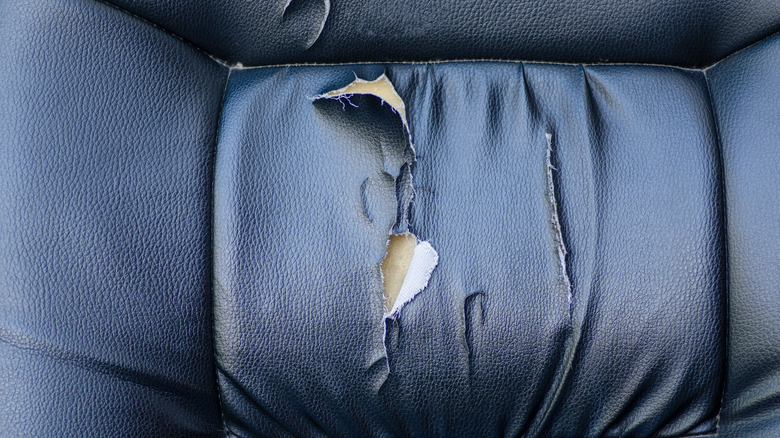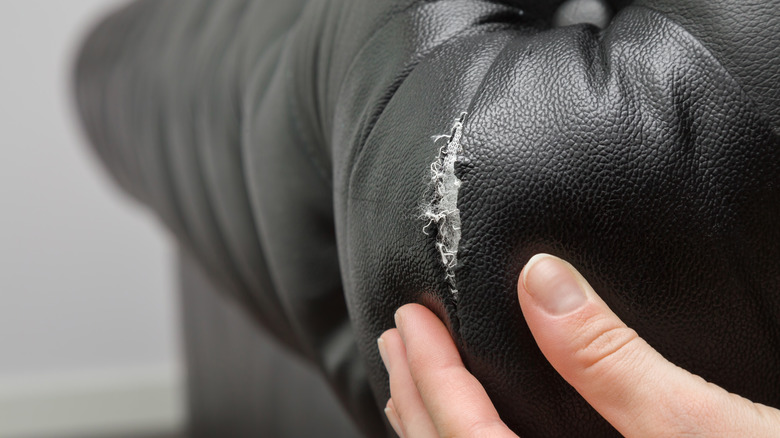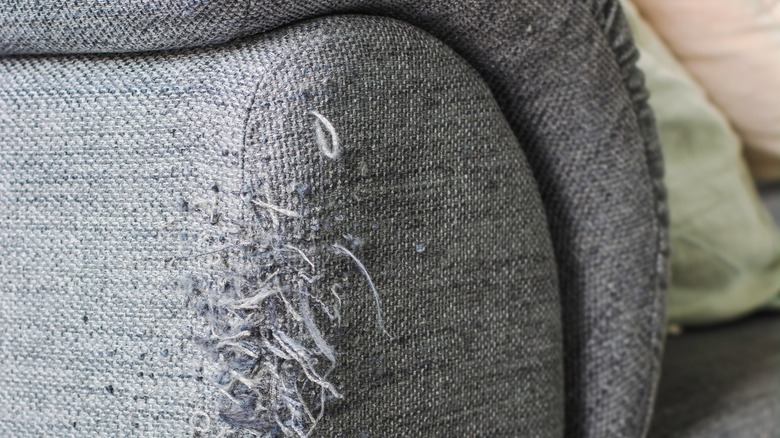The Fastest Fix For A Rip In Your Sofa
Your sofa might be the most popular seat in the house, which means it sees a lot of traffic every day. General wear and tear are typical for a couch, especially if your home is a busy place full of people, pets, and activity. But when a tear appears in the material, it can be unsightly and lead to further disrepair if not taken care of. Not all sofas are made the same, which means there are different ways to fix a rip or tear for each one. No matter how the issue came about, there are a few simple solutions to get your couch back to normal, so everyone can continue to enjoy it.
Depending on the material your couch is made of, you have different options on how to repair it. If your sofa is made of leather or vinyl, you'll want to clean the affected area first. This helps remove dust, dirt, and other particles that will keep a patch from adhering to the surface. Suggest How recommends using rubbing alcohol to clean off the section that needs attention, then grabbing a microfiber cloth to wipe it down.
Leather couch repairs
Once you've cleaned up the tear, you can choose leather tape, adhesive, or filler to patch up the opening. Leather tape can simply be placed over a rip once you've measured out the right length and let the freshly cleaned area dry. Don't apply tape to a spot that is still moist; otherwise, the ends won't stick to the material properly. Pick a color that matches your sofa as closely as possible, and Suggest How recommends lining up the ends of the tape pieces with existing creases to make them less noticeable.
When using leather adhesive or fillers, you'll have to purchase a kit with all the necessary parts. Adhesive will need a patch of some kind to cover the hole, which you can choose to match the existing material. Fillers can be placed over a leather adhesive and usually come in a pair. Once the glue is completely dry, you can apply a filler. This requires finding leather-friendly paint that goes on top of both portions to blend with the color of the couch.
Fabric fixes
If your sofa is fabric, you can sew up a tear, puncture, or hole in the arm or seat portion with nylon thread. For fraying edges or ruptured seams, use fabric glue to seal them and protect them from further damage. Sewing the main portions of the couch require a rounded needle specifically for mattresses or upholstery. You can find these at fabric stores along with nylon thread that is a similar color to your sofa. Hunker recommends removing the fabric whenever possible before starting to sew. If the rip is in an area where the fabric can't be removed, start by threading the needle on the underside of the hole. This will prevent the stitches from being as visible.
Glue can also help repair ripped fabric, which might be easier in certain sofa areas. You can purchase this sealant at specialty fabric stores, then use it to help keep fraying edges from becoming more pronounced. If you're able to find a similar material to the one on your couch, you can use the adhesive to patch the hole that way. Measure how much fabric you need, and wipe off the tear with a clean cloth to pick up any dirt, lint, or dust. Use the glue to stick the new patch over the damaged portion, then apply pressure to ensure it sits flush. Let it dry completely before using the couch.


